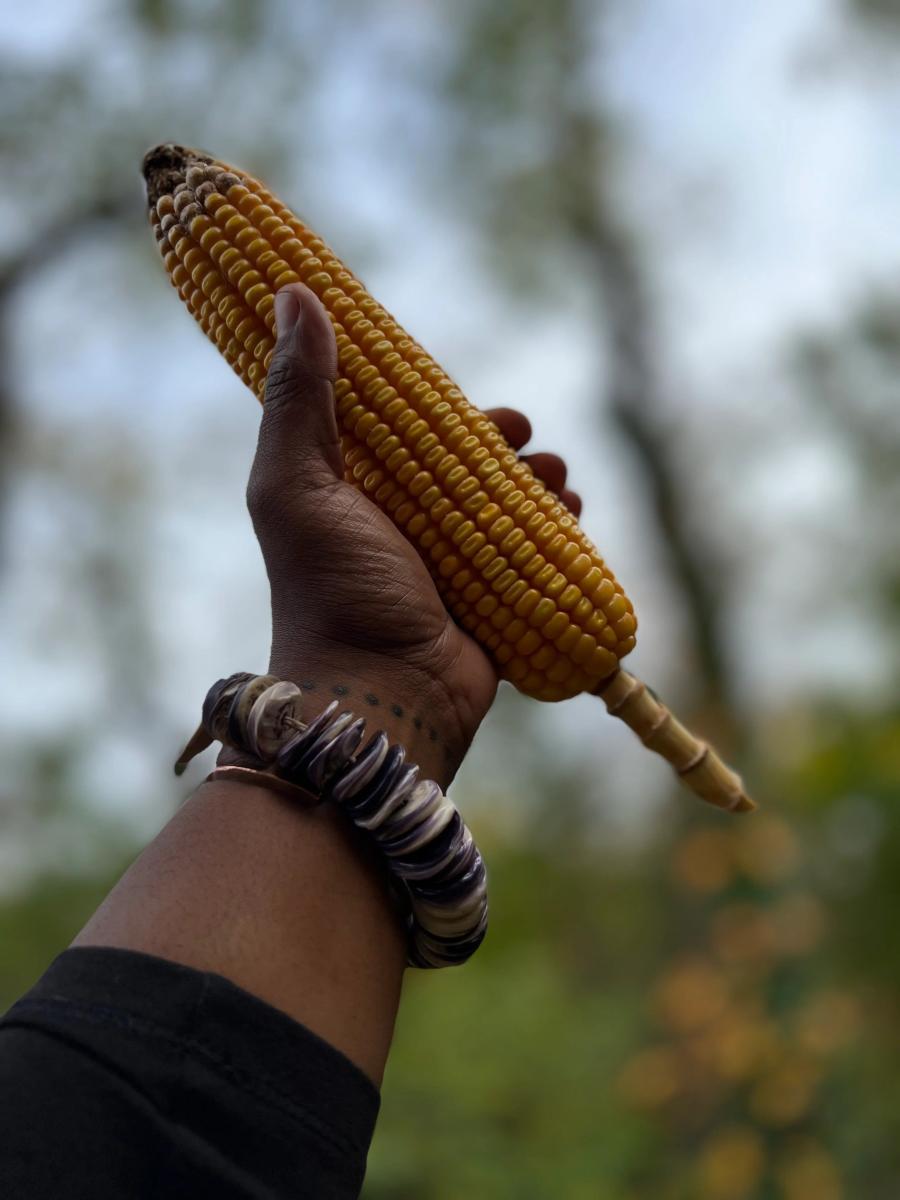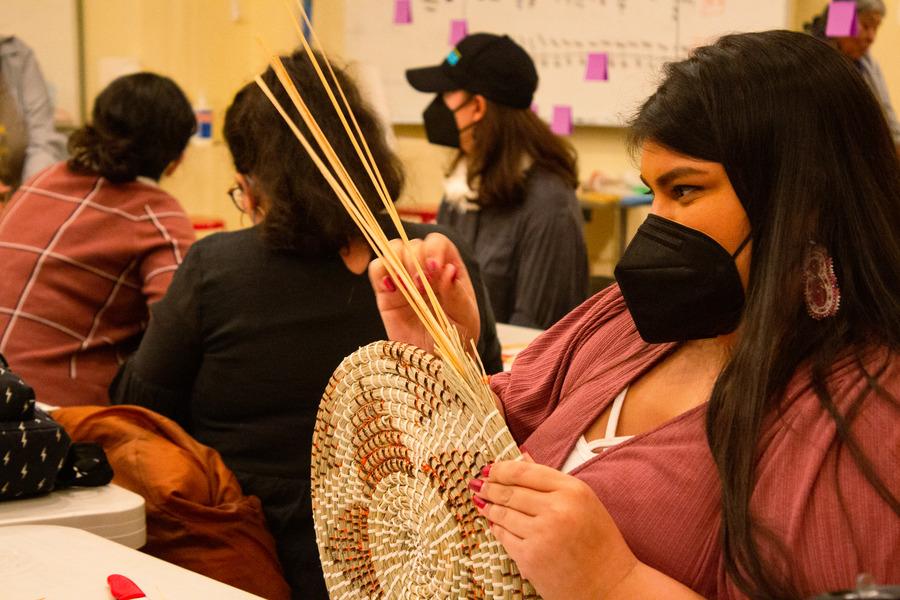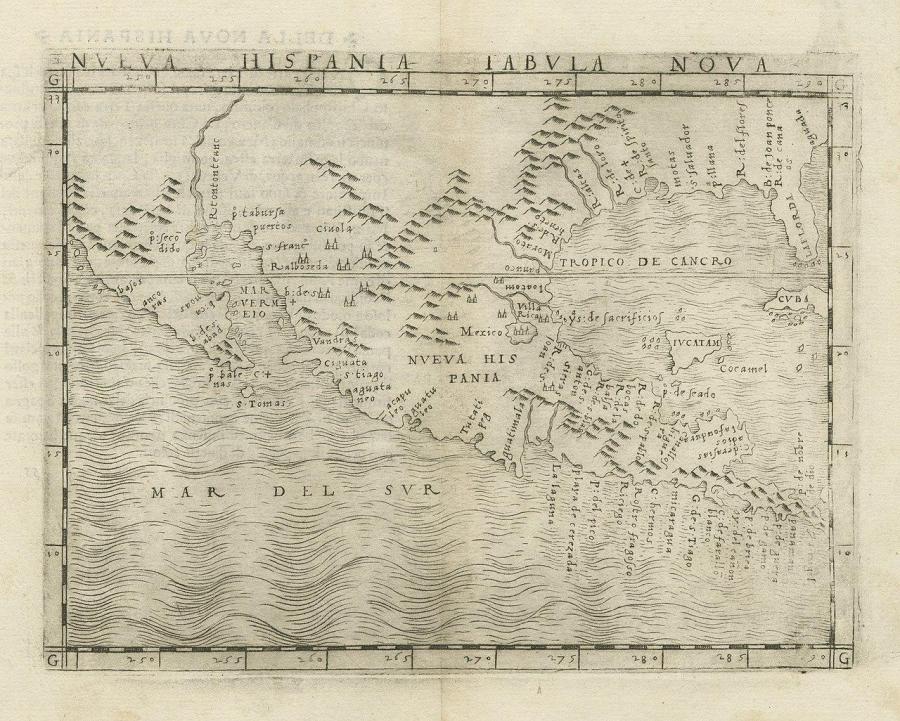Indians are among the largest owners of commercial forestry resources in the United States. Indian tribes control 16 million acres of forest land - 7.3 million acres classified as commercial forest and 8.7 million acres classified as woodland. In an ever increasing number of cases, the tribes themselves administer and control these resources, even though the Department of the Interior holds Indian-owned forests in trust.
Currently, 103 Indian reservations have commercial forest operations in 23 states, with over 90 percent of Indian forest production located in Washington, Oregon, Montana, Arizona, New Mexico, California, Wisconsin, and Minnesota (see map). The federal Bureau of Indian Affairs (BIA) estimates that these forests contain 44 billion board feet of commercial timber with an allowable cut of 1.02 billion feet per year. In the 1980s, these forests produced $100 million annually in stumpage revenue and provided the equivalent of over 12,000 full-time, year-round jobs.
While widespread poverty and unemployment continue on most U.S. Indian reservations, several developments point to a revitalization and transformation of reservation economies. Forestry is at the forefront of these changes, especially as more tribes establish their own sawmills and forest products industries, as new methods appear for managing Indian forest resources, and as Indian youths master forestry and other natural resource management fields. Moreover, although North American Indians have unique legal relations with the U.S. government and occupy different types of forests from many other indigenous peoples in the rest of the hemisphere, their experience provides insights that might be fruitfully transferred to other countries and regions.
TAKING CONTROL OF FORESTRY RESOURCES
The major challenge for timber-owning tribes has been how to capture more of the income generated from their own natural resources. Historically, outside contractors and companies obtained most of the revenue from Indian forests through so-called "stumpage agreements" with the tribes arranged by the BIA. Under such agreements, non-Indians exploit Indian timber resources in exchange for royalty or lease payments. Stumpage fees have been an important source of tribal income, yet most profits flow out of the reservations. Even now, tribal sawmills process only 40 percent of the timber cut from Indian lands.
There are exceptions to this historical pattern. The Menominee Tribes in Wisconsin was the first Indian group in the United States to establish its own tribally owned sawmill and forestry operation (see "'The Trees Will Last Forever"' on p. 28). Especially since the 1960s, other tribes have followed the Menominee guide. For example, the Navajo Reservation in New Mexico and Arizona is home to Navajo Forest Products Industry (NFPI) and Warm Springs Forest Products Industry is on the Warm Springs Reservation in Oregon.
Although the establishment of tribally owned sawmills and forest-products industries constitutes a major trend, not all ventures have succeeded. Nor do tribally owned timber operations always coexist easily with other economic and cultural goals. The Red Lake Indian Mills in Redby, Minn., established in 1924, faced financial difficulty throughout its history and temporarily shut down in 1984. Other mills, including the Navajo and Menominee ventures, automated to remain financially viable - at the cost of some tribal jobs.
Moreover, at places like the Navajo reservation, some people argue that the large size and commercial orientation of the tribally owned, industrial-forestry operation overexploits timber resources. This has led to tribal debate about the need to balance forestry development with other land and resources uses, such as agriculture, grazing, tourism, conserving fish and wildlife, and protecting sacred sites.
Nevertheless, the growth and expansion of tribally owned forestry enterprises seems to be the wave of the future. This is especially the case as tribes recognize the role of their forest resources in generating revenues and stimulating overall reservation development.
THE FEDERAL ROLE
Whether conventional stumpage agreements continue or tribes operate their own forest industries, the BIA's Division of Forestry is a primary actor. Since its establishment in 1910, the division has been embroiled in controversy.
The division's problems arise from many sources, including the BIA's excessive bureaucracy and paternalism and its susceptibility to the whims of Congress, regional interest groups, and the Executive Branch. Moreover, the BIA plays a dual role as both trustee and developer of Indian lands and resources. Although many in the Forestry Division are dedicated to protecting Indian resources and welfare, there are serious questions about whether the BIA adequately fulfills its trust responsibilities.
Many issues surrounding the role of the BIA and its Forestry Division surfaced in government investigations conducted in the 1970s in response to Indian claims for greater economic independence and self-determination. For example, a 1974 investigation by the Government Accounting Office (GAO) said the bureau had moved too slowly toward the primary goal of achieving sustained yield management of Indian forestry resources. One year later, a task force of the congressional American Indian Policy Review Commission criticized the BIA's policies in relation to developing Indian resources, including those dealing with timber.
The GAO and commission reports influenced the passage of the Indian Self-Determination and Education Act of 1975 (Public Law 93-638). This law reaffirms the federal government's trust responsibilities, but at the same time it grant tribal governments more power to provide services and determine the destinies of their peoples. Under this law, tribal governments can assume the management of reservation forestry resources with funds provided through contracts with the BIA. As a result, many new tribal forestry organizations have been created. Working with the Forestry Division, they perform the full range of forestry-management tasks, from inventorying forests and preventing fires to managing the entire forestry program of a tribe.
Since November 1990, the National Indian Forest Resource Management Act. PL 101-630, has spelled out the responsibilities of the Secretary of the Interior and the BIA in relation to Indian forestry resources. This act is sometimes called the Indian Forest and Woodlands Act. One of its central goals is to consolidate the role of tribal governments in managing and developing Indian forests through education and training, participation in administering and managing forest lands, and better knowledge of the value and extent of resources.
PL 101-630 emphasizes the need to incorporate tribal forestry development into integrated natural resource management plans. This holistic approach marks a break from the recent past, when most emphasis focused on the commercial or productive aspects of Indian forests within a so-called "sustained yield" management framework. While there is still a strong push to commercialize Indian forests to provide jobs and income, tribes are recognizing the recreational, wilderness, aesthetic, religious, and other values of forests. This perspective represents a return to traditional Indian values and incorporate the various aspects of the natural environment into a single, coherent cultural ideology.
Since the passage of the 1978 American Indian Religious Freedom Act, Indian tribes have demonstrated growing concern about how forestry developments could damage sacred and other religiously important sites. One of the most publicized cases was an attempt by the Yurok, Karok, and Tolowa Indians to stop a logging road in Six Rivers National Forest in northern California. The Gasquet-Orleans Highway or Go-Road, as it is called, was planned to traverse a mountain range the tribes used for such ceremonies as training young medical and religious leaders. The Indians feared the road would not only damage the pristine environment that makes the mountain peak sacred, but would also bring tourists who would make it difficult to carry on traditional ceremonies.
In 1983, with the support of environmental organizations, the Indians convinced a Federal District Court to bar the U.S. Forest Service from proceeding with the Go-Road on grounds of protecting their religious freedom. However, the Supreme Court overruled this decision in 1988. Despite this setback, Indians have continued to sue the Forest Service and other agencies when planned road and other developments threaten the integrity of lands and forests they hold to be sacred.
INTER-TRIBAL COOPERATION AND FORESTRY EDUCATION
Two other aspects in contemporary Indian forestry are worthy of note; inter-tribal cooperation and forestry education.
The main forum for cooperation on Indian forestry issues is the Inter-Tribal Timber Council. Established in 1979, the council represents 65 tribes from all over the continental United States and Alaska. Through its newsletter and annual National Indian Timber Symposium, the ITC serves as a focal point for sharing information on forestry issues, improving forest management, and promoting Indian forestry interests.
The council was influential in the passage of the Indian Forest Resource Management Act and is helping develop regulations to implement it. The ITC also plays an important role in opening new markets for Indian forest products. For example, in the mid-1980s, it sent a trade mission to Micronesia and China.
Both the ITC and the BIA Forestry Division support the training of Indian youth to pursue careers in forestry. In 1978, the BIA established the Native American Electronics Training Program in cooperation with the Bureau of Land Management. The program operates out of the Intergency Fire Center in Boise, Idaho, and provides Native Americans with training to maintain the BIA's tele-communications system. This system is critical to preventing and fighting forest fires in the West.
In 1980, the BIA set up the Indian Forester Intern Program, which provides schooling to qualified tribal members in forestry management and related skills. People who qualify for the program receive funds to register in forestry degree programs. As of 1990, 18 interns had completed the program; four Indian forests had finished similar intern programs on the Warm Springs and White Mountain Apache reservations. The ITC encourages the training and development of Indian foresters, and the 1990 National Indian Forest Resources Management Act includes funds for expanding such programs.
TRIBAL "FREE TRADE"
Because of their history of managing forest resources, U.S. Indians have a great deal to teach - and learn from - their brothers and sisters in other countries. Links have already been established between U.S. and Canadian timber-owning tribes, and Indian forestry associations now exist in both countries. In the future, similar links will be forged with peoples in other parts of North, South, and Central America.
As these ties evolve, fruitful exchanges could emerge among forest-owning Indian groups throughout the Western hemisphere. For example, the lessons gained from large and relatively successful tribally controlled sawmills and forest-products industries in the United States and Canada could be passed on.
Similarly, U.S. and Canadian tribes are designing multiple-use management systems that take into account the unique environments and cultural and religious values of Indian peoples. As the Navajo and other North American Indian tribes explore this question, other tribes and regions could learn from their experiences.
U.S. and Canadian Indians are actively training their youth to become foresters, fish and wildlife experts, and biologists. As the number of Indian resource professionals increase, opportunities emerge to transfer skills and knowledge across tribal and national frontiers. Inter-tribal teams of Indian professionals could provide natural resource management and economic development training to indigenous communities across the Americas.
Lastly, indigenous organizations and communities could pursue inter-tribal trade and marketing. Indigenous groups within countries are already experimenting with supply and marketing arrangements. Thus, Navajo Forests Products Industries buys timber from the Southern Ute Tribe in Colorado and processes if for sale in markets throughout the Southwest. Similar exchange networks could encompass regions, such as the Southwest, or even the entire hemisphere. Ideally, initiatives to create "free-trade" zones between countries could, if properly designed, challenge, rather than threaten, inter-tribal and cross-national Indian interests.
THE WHITE MOUNTAIN APACHE EXPERIENCE
As American Indians attempt to conserve and develop their forestry resources, many look to the story of the White Mountain Apache Tribe of Arizona. Established in 1964, the tribe's Fort Apache Timber Company is the largest tribally owned timber operation in the United States. Its modern sawmill can turn out 110 million board feet each year. The company gets its wood from the tribe's 685,000 acres of commercial timber land.
The White Mountain Apache exemplify the types of decisions that U.S. Indian tribes make as they develop forestry resources while preserving them for future generation. Answering the need for development models that respect local cultures and conserve natural resources, this forest-rich tribe faces everyday choices about how best to put such models into place.
The White Mountain Apache's logging and sawmill operation provides over 500 jobs to tribal members and brings in $30 to $40 million annually. While poverty and unemployment still afflict the 10,000-member tribe, the White Mountain Apaches are relatively prosperous.
When established in 1964, the Fort Apache Timber Co. replaced Southwest Industries, an outside company that had exploited tribal timber since the 1920s. Southwest Industries had severely overcut the tribe's forests, taking out over 100 million board feet of timber each year. "They led us to believe that we could cut 'till kingdom come," White Mountain Apache Vice Chief Alvino Hawkins told a 1989 gathering of the National Aboriginal Forestry Association of Canada.
To preserve the forest, the White Mountain Apache cut production. According to Hawkins, the tribe dropped the cutting allowed to 80 to 90 million board feet of timber per year. It has since reduced the cut even further, to 68 million board feet. While this diminishes the immediate economic return, it provides more security that the forests are being sustained. "Do not let the Canadian government tell you the size of cuts on your reservation," Hawkins cautioned. "If you are concerned with future generations, make sure your have your numbers together when you deal with your timber."
At the same time, the White Mountain Apaches have reduced their dependence on timber and the whims of the forest-products market. In the 1980s, the tribe earned $10 to $15 million annually from its ski resort,$1.5 million from recreational services, and $5 to $6 million from livestock production. The tribe thus draws on its wildlife and outdoor recreation and tourism resources, including 25 lakes and 428 miles of trout streams.
Because such resources are important sources of income and jobs, the tribe must manage them properly to ensure that commercial forestry doesn't damage or threaten them. This means resolving conflicts among different forms of land and resource use. To do this, Fort Apache Timber Co. describes its timber sales plans at an annual scoping session. In attendance at the session are tribal groups that have interests in wildlife protection, recreation, livestock production, and other uses. The participants air conflicting land and resource uses, with the goal of reaching consensus. "We try to find solutions before we have problems," said Wilkie Gregg, chair of the Tribal Forestry Committee. "We adjust and accommodate. This may mean leaving buffer zones for wildlife or being sensitive to livestock grazing."
If a problem can't be solved at the scoping session, a five-person interdisciplinary team - comprised of a member of the tribal council, the Forestry Committee chair, and the tribal forester, forest manager, and wildlife biologists - reviews the areas of disagreement. The team's decision goes to the Forestry Committee and then to the Tribal Council, which has ultimate authority to decide on the annual timber sale plan. "Although this process was first developed for timber sale planning," Vice Chief Hawkins noted, "we natural resource project."
Article copyright Cultural Survival, Inc.



